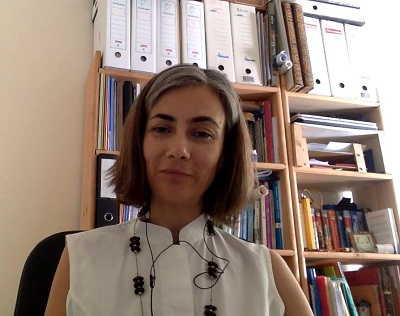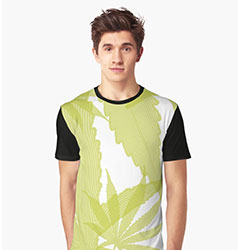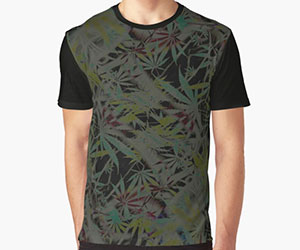If this all sounds familiar, or you’re new to weed but wary, you might feel you’re just not cut out for cannabis. But consider hot sauce: some people drown their food in fiery spice, while others are content with a single drop. THC is sort of the same, and how you experience this cannabinoid has more to do with your unique genetic makeup than other factors such as age, gender, what you ate that day or even the number of times you’ve consumed it in the past.[1]
Dr. Rattan Pasenar, medical director of Cannaway Clinic[2], explains cannabinoid receptors have genetic variations from person to person, which is why two people can consume the same amount and yet have vastly different experiences.“Each of us has a unique receptor physiology. Some people may react differently depending on their receptors, which may contribute to whether someone has an enjoyable experience or not,” he says.
He also points out the feeling of being high is subjective, much the same as alcohol is enjoyed by some, but not everyone. “Some people may not like any feeling of impairment, and this holds true with cannabis,” he offers.
So you might have sensitive cannabis receptors. Now what? The good news is we’re in the age of legal cannabis, which means you can access clinical expertise combined with an enormous range of regulated products. In this day and age, medical patients and recreational consumers alike can get the most from weed without the unwanted side effects. Here’s how to make it work for you:
Slow and low, that is the tempo
It’s said over and over (and over) again, but Pasenar reiterates this wise cannabis adage: Start low, and go slow.
- “Low” means a really low dose of cannabis
- “Slow” means allowing your body enough time to absorb the product fully, which can take up to four hours
“This [rule] applies to the ingestion of cannabis oils as well as the inhalation of cannabis flower or vapour from a vaporizer,” he explains. Health Canada[3] recommends consuming edibles with less than 2.5 mg THC, and waiting up to four hours to feel any effects. If smoking or vaping, Health Canada says to start with just one or two puffs from a strain with less than 10% THC, and wait up to 30 minutes.
For medical patients, including recreational consumers who are self-diagnosing, Pasenar emphasizes the importance of getting assessed by a cannabis-specializing physician who can guide you to the right dosage and method of ingestion. “This is especially important for people who are already taking other medications to ensure interactions[4] or risks associated with their existing treatment plan are managed properly.”
Keep it legal
The legacy market laid the groundwork for today’s legal cannabis. But in the decades leading up to legalization, weed was bred to contain very high THC levels—not ideal for sensitive types. Buying from legal sources not only takes the guesswork out of product potency, Pasenar stresses it’s the only way you can be sure of exactly what you’re getting.
“Current day cannabis is different than the cannabis of the past,” he says. “Today’s cannabis is highly regulated by Health Canada, and includes a variety of different strains, formulations and intake methods; this is beneficial to the medical patient as well as the new recreational consumer.”
If a party joint from back in the day made you freak out, Pasenar assures this isn’t a reason to avoid cannabis forever. “Individuals who have historically had negative experiences with cannabis should not feel anxious or nervous to try cannabis for medical purposes under the supervision of a medical team.” He says the approach in this instance is a treatment plan of predominantly CBD with low doses of THC. For patients who are still hypersensitive to the effects of THC—which he says is rare—the medical team can quickly adjust and refine dosage and treatment.
You can still be friends with THC
In this age of CBD hype[5] it can be tempting to think of CBD as the therapeutic sibling to intoxicating THC, as if they’re opposite sides of a cannabis moral coin. This is simply not true. Both cannabinoids—which are just—two of many[6]—have therapeutic qualities. A recent study published in Nature suggests cannabis that includes THC provides greater symptom relief for a broad range of health issues compared to consumption of CBD alone. Pasenar explains [7]the entourage effect[8] is a theory suggesting that the entire cannabis plant provides greater therapeutic results than any individual component on its own.“We have observed at Cannaway that full-spectrum cannabis products provide better symptomatic relief, which may be attributed to the entourage effect,” he says. “When we prescribe a low dose of THC in combination with CBD and a complete terpene profile, we have seen better efficacy in many patients anecdotally than when CBD is taken on its own.”
And no, patients don’t have to suffer through unwanted funny feelings. Says Pasenar: “When we introduce THC to a patient, they will often start by taking it at nighttime, before bed. Nighttime is when feelings of euphoria are minimized since the patient is sleeping, and there is less risk of the patient driving or operating heavy equipment.”
If you go too far…
First of all, Pasenar reassuringly points out that no one—neither patients nor recreational consumers—has ever died from an overdose of cannabis. He suggests feelings of paranoia, fatigue, palpitations or dizziness from a high dose of THC can be countered with a high-CBD product, which can block the effect of THC at the CB1 receptors, and may help alleviate some symptoms. (Although in very rare case of psychosis or hallucinations, he says seek immediate medical attention.) But for the vast majority of people, time in a comfortable space is the best course of action.[9]
In addition to taking CBD, Pasenar says you can also try eating a meal to slow down THC absorption in the gut, and that taking a nap may help alleviate some symptoms (and kill time).Pasenar reiterates that medical patients are in good hands, and that they should have no apprehension to using low doses of THC in conjunction with CBD. “We have seen that this allows us to successfully treat a variety of medical aliments, and our patients are able to achieve better symptomatic relief and increase their quality of life.”

Colleen Fisher Tully
Colleen Fisher Tully is a freelance writer and editor with recent work in Clean Eating, Today's Parent, The Walrus and Local Love. She posts random thoughts on Twitter @colleenftully
References
- ^ cannabinoid (www.leafly.com)
- ^ Cannaway Clinic (cannawayclinic.com)
- ^ Health Canada (www.canada.ca)
- ^ interactions (www.leafly.com)
- ^ CBD hype (www.leafly.com)
- ^ two of many (www.leafly.ca)
- ^ A recent study published in Nature suggests cannabis that includes THC provides greater symptom relief for a broad range of health issues compared to consumption of CBD alone. Pasenar explains (www.nature.com)
- ^ the entourage effect (www.leafly.com)
- ^ CB1 receptors (www.leafly.ca)
Read more https://www.leafly.com/news/lifestyle/canada-thc-afraid
Latest
Coronavirus Strikes Massachusetts Cannabis Company Employees
Reassessing the Essential: Cannabis in the Time of a Pandemic
5 Reasons To Try Aspen Valley CBG Flower (30% Off)
High Times Cannabis Cups Go Virtual In Wake Of Coronavirus Pandemic
Drug Enforcement Administration Proposes Plan To Expand Cannabis Research
Ghana Legalizes Cannabis For Medicinal And Industrial Uses
The cheapest legal weed in Canada: Discover these cannabis ‘value brands’
Cannabis and coronavirus: Here’s what you need to know
cannabis designs
The Best Of
WHO Rules CBD Should Not Be a Scheduled Drug

Dr Cristina Sanchez PhD video interview on medical marijuana and cancer

Biochemist Dennis Hill interview; Cannabis oil as a cure for cancer.

The unofficial World Record holder for cannabis smoking part 1





